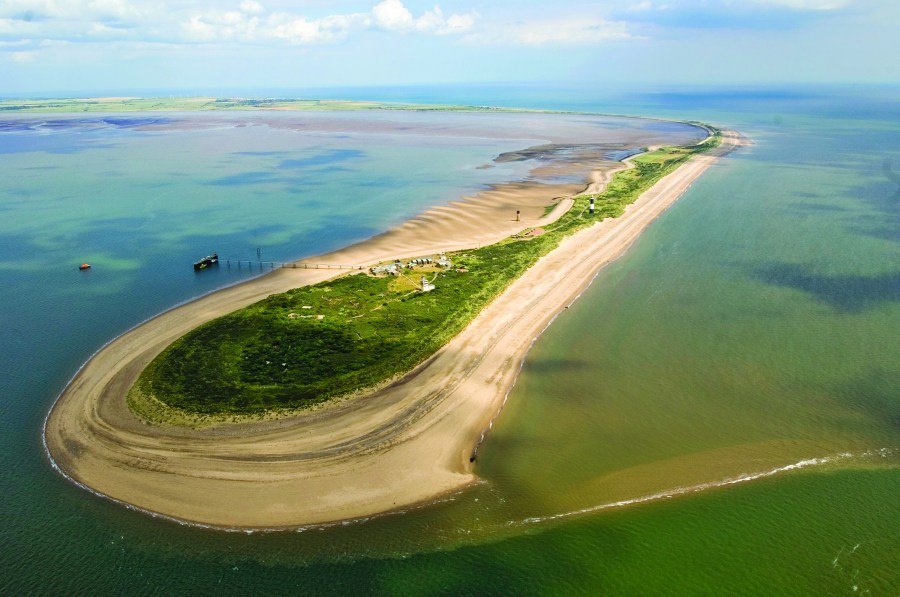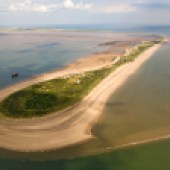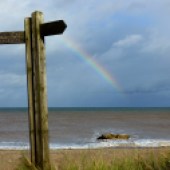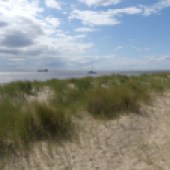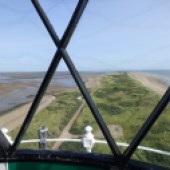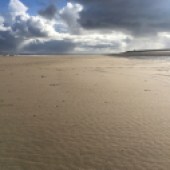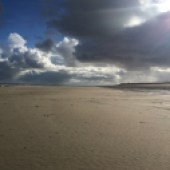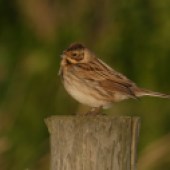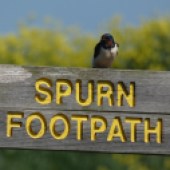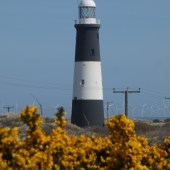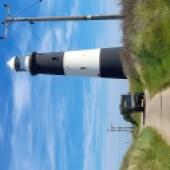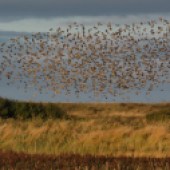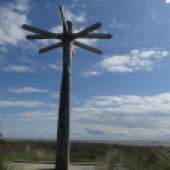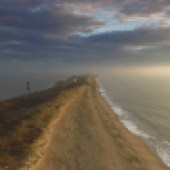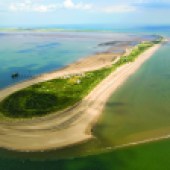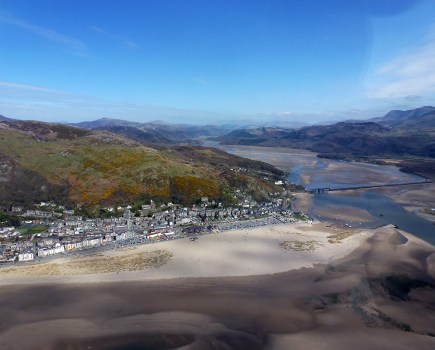Spurn Point is a unique, remote destination sitting at the very tip of east Yorkshire’s precarious coastline. JENNY OLDAKER explores a place teeming with wildlife.
There’s nowhere in the British Isles quite like Spurn Point. It has been dubbed ‘Yorkshire’s Land’s End’ but it has none of the rugged cliffs or tourist razzmatazz of that Cornish landmark. Instead, Spurn’s low-lying landscape is a wild, ever-changing panorama of sandy dunes, glistening mudflats and sea buckthorn scrub. It’s a place that’s epitomised by big skies and sweeping vistas.
This spit of land is as narrow as 50 metres in places, but it’s more than three miles long, delicately stretching into the water; a narrow, curving pendulum between the North Sea and the Humber Estuary. Its unique shape formed over time from the sediment, sand and gravel that washed down the eroding east Yorkshire coastline; longshore drift moved the materials along the coast, creating Spurn’s narrow peninsula in the process.
Exposed and at the mercy of the elements, the land here continues to shift and evolve – as recently as 2013 a storm surge ripped through the land, destroying dune and road, and creating a tidal island. The event produced a ‘wash-over’ section of land, which gets completely covered at high tide (so visitors should pay attention to tide times when walking to the Point).
Today the site is owned by the Yorkshire Wildlife Trust (YWT) and this designated National Nature Reserve is a spectacular spot for wildlife, drawing visitors year round for its unique flora and fauna, most notably an unparalleled array of birdlife.
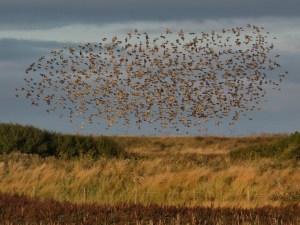
However, the site has a fascinating line in human history too. There is still evidence of the old village of Spurn, which was abandoned before the Point was cut off, as its few permanent residents gave up on the precarious existence of day-to-day life in this wild place. Further ‘lost’ villages exist beneath the sea to the east of the Point, among them medieval Ravenser Odd, which was taken by a storm in the 1300s and Ravenspurn, which was washed away by the sea in the 1800s, another victim of this ever-shifting coastline.
Beyond these Atlantis-style sunken towns, much of Spurn’s human history is entwined with its military past. Its earliest defences date back to the Napoleonic Wars, but military activity expanded hugely during the First World War when more than 500 troops were garrisoned here. Its importance as a defensive base continued during the Second World War, and the derelict remains of gun batteries, bunkers and the railway are tangible remnants of Spurn’s military past, which can still be explored today (YWT offers regular tours).
Most of these relics have been reclaimed by nature since the area’s demilitarisation in the 1950s, and this wild element of Spurn that has taken over from the area’s human habitation has become the destination’s major draw for visitors: its location and diverse mosaic of carefully managed habitats provide a perfect combination for attracting myriad exciting species.
Geographically, Spurn is an exceptional spot for migratory birds in spring and autumn, with new arrivals by the day and regular rarities sighted. Adam Stoyle, Spurn operations manager for YWT, cites his personal highlight as an unprecedented autumn arrival of thrushes: “The bushes were dripping with redwings, fieldfare and blackbirds! Such a fantastic experience and one that happens very rarely.”
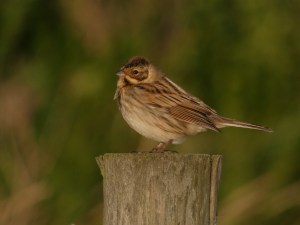
In addition to this abundance of shoulder season migrants, there are bird sightings to enjoy all year round, and other ornithological highlights include merlins, great grey shrikes and the rare little tern (though the roll call of feathered visitors to Spurn is extensive and ever-growing).
It’s not just birds that flock here either – insect and plant life abound in this habitat too, and if you’re lucky you may be lucky enough to glimpse a roe deer or fox in the grassland, while harbour porpoises, seals and even minke whales can be spotted out at sea.
A bracing walk across the exposed peninsula is one of the best ways to explore the place and its wildlife (note that no dogs are allowed), with a climb to the top of the lighthouse when it’s open for a 360-degree view of land and sea.
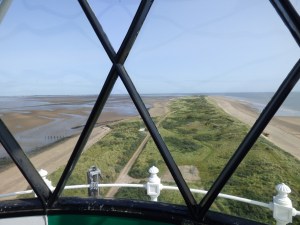
If you don’t fancy the trek, a Spurn Safari makes a fantastic introduction to the reserve on four wheels. “This is a fully guided three-hour tour that takes in everything Spurn has to offer on our ‘Unimog’, a specially converted ex-military vehicle,” explains Adam. “The first stop is the restored Spurn lighthouse. The tour then heads to the Point for a walk to the tip of Spurn, looking at the seasonal wildlife along the way. Guests will also learn about the history of Spurn, how it was formed and how we manage the reserve to provide the best possible habitat for all the wildlife.”
However you decide to discover Spurn and its myriad highlights, the recently opened Discovery Centre is a great place to start or end your visit, with a small shop, a café serving up hot drinks and light bites (alongside a spectacular outlook), and knowledgeable staff on hand to answer questions or talk about the latest sightings.
If you’ve visited the UK’s higher-profile coastal destinations and you’re after something entirely different, a trip to Spurn makes for a memorable experience with its abundance of wildlife, historic interest and endlessly glorious views.
“It really does have something for everyone,” enthuses Adam. “No matter what your interest you can find a piece of Spurn for you, whether it’s the landscape, its history or the wildlife that calls it home.”
WHERE TO STAY
The Shepherd’s Hut
In the village of Halsham, Little Otchan Glamping offers cosy shepherd’s hut accommodation for two, as well as bell tent glamping and a holiday house sleeping ten. The site is a short drive from Spurn and half a mile from the family-run Great Newsome Brewery. littleotchan.co.uk
The Farmstay
A warm welcome awaits at this lovely listed farmhouse in the East Yorkshire countryside. With three comfortable bedrooms, a large garden and lovely south-facing lounge to enjoy, Elm Tree Farm is a friendly home-from-home. Camping is also available. bandbatelmtreefarm.com
The Observatory
If you’ve come to Spurn for the birdlife, Spurn Bird Observatory is the place to stay. This modern, hostel-style accommodation is located at the northern end of the Spurn peninsula. It’s a basic but comfortable base and perfectly sited for birding adventures, with estuary views to boot. spurnbirdobservatory.co.uk
LEADING LIGHT
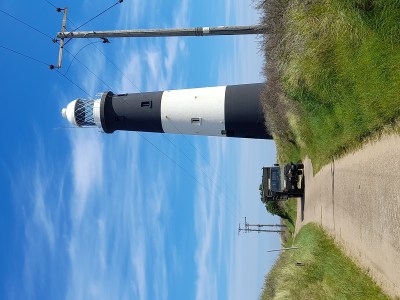
Spurn’s lighthouse looms dramatically from the dunes at the tip of the peninsula – standing at 128 feet it’s the tallest in northern England – and, if you’re up for a climb, it offers an incredible panorama from the top.
Records show that Spurn Point had a lighthouse as far back as the 15th century, but the one that stands here today was built in 1895. After almost a century of service, it was decommissioned in 1985 and restored to its current state in 2016. Now visitors can get a sense of the history of this striking building, which guided so many ships in the treacherous waters around this coastline.
The lighthouse is usually open from Friday to Sunday (and some weekdays in summer). Entry £4 for adults (£3 concessions).

